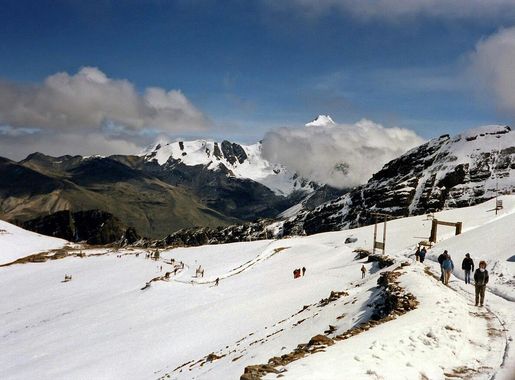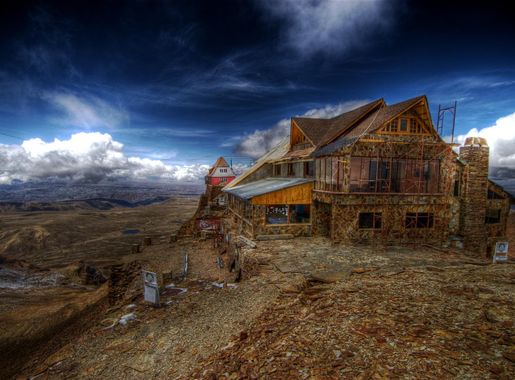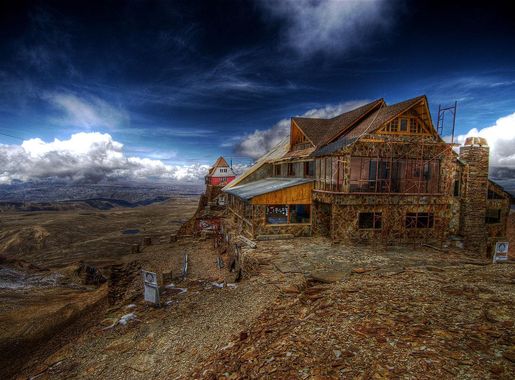
Chacaltaya: The Enchanted Mountain of Bolivia
Experience the majesty of Chacaltaya, Bolivia's enchanting mountain with breathtaking vistas, rich cultural heritage, and thrilling adventure opportunities.
Chacaltaya, once home to the highest ski resort in the world, now stands as a captivating destination for adventurers and nature lovers. Located in the Cordillera Real mountain range, just 30 kilometers from La Paz, this stunning peak offers breathtaking views and a unique atmosphere. At an altitude of 5,421 meters, Chacaltaya provides visitors with a glimpse of snow-capped peaks and sweeping vistas of the surrounding Andes. Although the ski resort has ceased operations due to the melting glacier, the area remains a popular spot for trekking and mountaineering. A visit to Chacaltaya is not just about conquering heights; it's about experiencing the raw beauty and serenity of Bolivia's natural landscape. The journey to Chacaltaya is an adventure in itself. As you ascend the winding roads, you will pass through charming villages and witness the daily lives of the local Aymara people. The final stretch to the summit is a challenging hike, but the panoramic views from the top are well worth the effort. On clear days, you can even catch a glimpse of Lake Titicaca and the bustling city of La Paz in the distance.
Local tips in Chacaltaya
- Acclimatize in La Paz for a few days before visiting Chacaltaya to avoid altitude sickness.
- Dress in layers and bring warm clothing, as temperatures can drop significantly at higher altitudes.
- Hire a local guide for a more informative and safe trekking experience.
- Start your hike early in the morning to avoid afternoon clouds that may obstruct the views.
- Carry snacks and plenty of water, as there are no facilities on the mountain.
Chacaltaya: The Enchanted Mountain of Bolivia
Chacaltaya, once home to the highest ski resort in the world, now stands as a captivating destination for adventurers and nature lovers. Located in the Cordillera Real mountain range, just 30 kilometers from La Paz, this stunning peak offers breathtaking views and a unique atmosphere. At an altitude of 5,421 meters, Chacaltaya provides visitors with a glimpse of snow-capped peaks and sweeping vistas of the surrounding Andes. Although the ski resort has ceased operations due to the melting glacier, the area remains a popular spot for trekking and mountaineering. A visit to Chacaltaya is not just about conquering heights; it's about experiencing the raw beauty and serenity of Bolivia's natural landscape. The journey to Chacaltaya is an adventure in itself. As you ascend the winding roads, you will pass through charming villages and witness the daily lives of the local Aymara people. The final stretch to the summit is a challenging hike, but the panoramic views from the top are well worth the effort. On clear days, you can even catch a glimpse of Lake Titicaca and the bustling city of La Paz in the distance.
When is the best time to go to Chacaltaya?
Iconic landmarks you can’t miss
Valle de la Luna
Discover the surreal landscapes of Valle de la Luna, a natural wonder near La Paz, Bolivia, where breathtaking rock formations await.
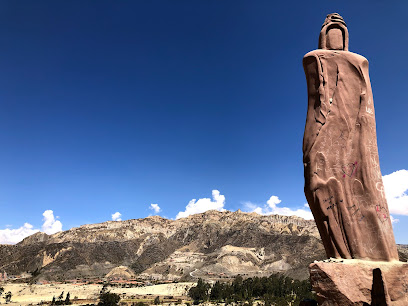
Mirador Killi Killi
Experience stunning panoramic views of La Paz at Mirador Killi Killi, a premier viewpoint that showcases the beauty of Bolivia's capital.
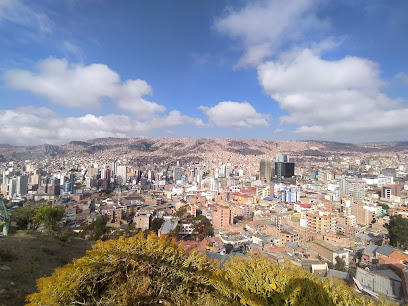
Huayna Potosí
Explore the breathtaking heights of Huayna Potosí, Bolivia's iconic mountain peak, offering stunning vistas and adventurous climbing experiences.

Mirador Laikakota
Explore Mirador Laikakota in La Paz for breathtaking views, local culture, and unique handcrafted souvenirs, capturing Bolivia's essence in one stunning location.
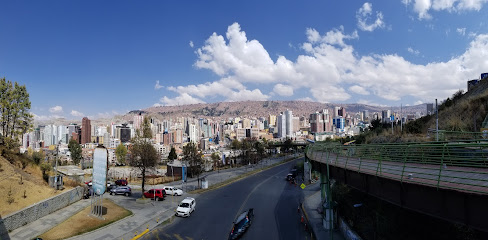
Laguna Charquini
Discover Laguna Charquini: A breathtaking hiking area near La Paz, Bolivia, featuring stunning landscapes and crystal-clear waters for nature lovers and adventurers.
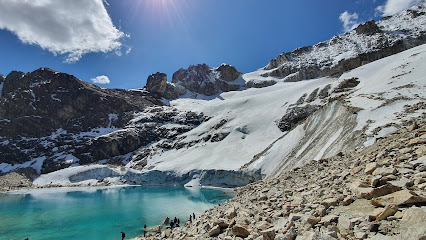
CHACALTAYA
Discover the breathtaking beauty of Chacaltaya Ridge in Bolivia, where stunning mountain views and rich cultural heritage await adventurous travelers.

Pampalarama
Discover Pampalarama in La Paz, a breathtaking tourist attraction offering stunning views and rich cultural experiences amidst Bolivia's natural beauty.
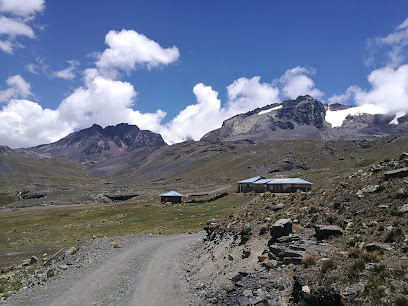
Inicio Trekking Chacaltaya
Discover the spiritual heights of Chacaltaya—a breathtaking pilgrimage in the Bolivian Andes that promises adventure and cultural immersion.
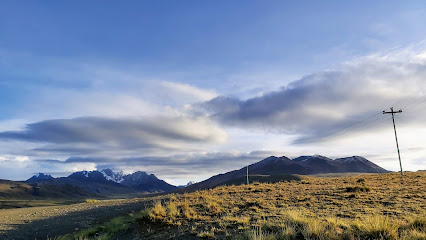
Unmissable attractions to see
Cota Cota Lagoon
Explore the enchanting Cota Cota Lagoon, an ecological park in La Paz, where nature meets tranquility and adventure awaits.

Iglesia San Miguel Arcángel
Explore the serene beauty and rich history of Iglesia San Miguel Arcángel, a captivating Catholic church in La Paz, Bolivia.
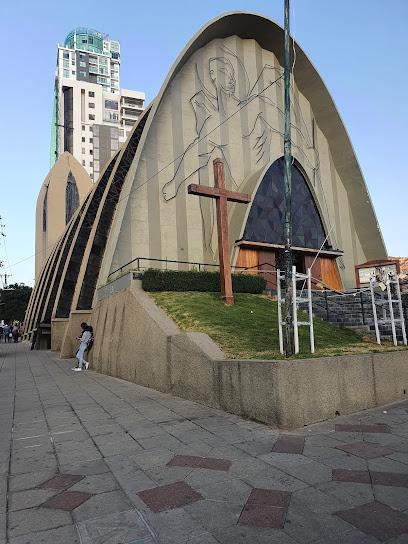
El Choro Trek
Embark on an unforgettable adventure along the El Choro Trek in Bolivia, where stunning landscapes and rich cultural experiences await every hiker.
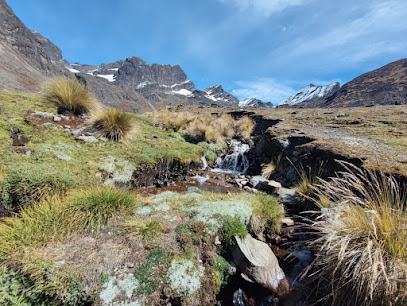
Takesi Trail
Discover the Takesi Trail, a historic hiking route in Bolivia offering stunning landscapes and rich cultural heritage, perfect for adventurous travelers.
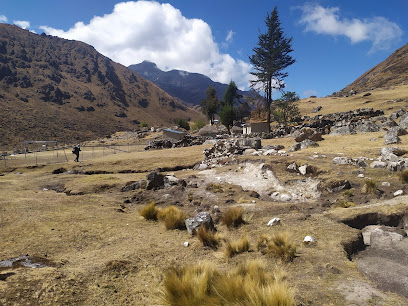
Chacaltaya Park
Explore the breathtaking beauty and diverse ecosystems of Chacaltaya Park, a high-altitude paradise near La Paz, Bolivia, perfect for outdoor adventures.
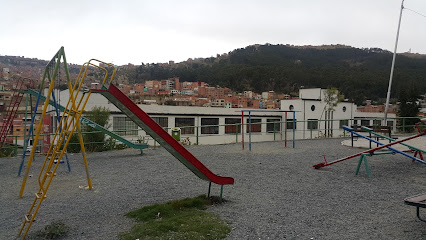
Achachicala centro
Experience the vibrant culture and rich heritage of Bolivia at Achachicala Centro, the heart of La Paz's tourist attractions.
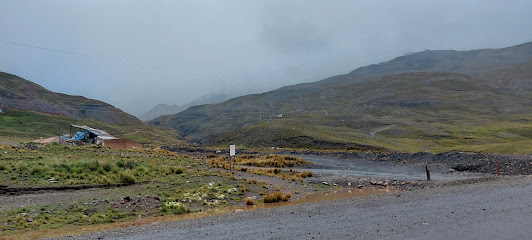
Wila Jalanta
Experience the breathtaking beauty and rich culture of Wila Jalanta, a must-visit tourist attraction in Milluni, Bolivia's stunning highlands.
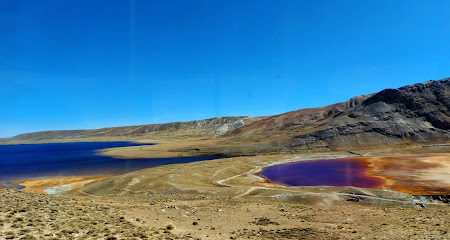
EL Qhathu
Discover the cultural richness of El Qhathu, a hidden gem in La Paz, Bolivia, where vibrant traditions and local heritage come alive.
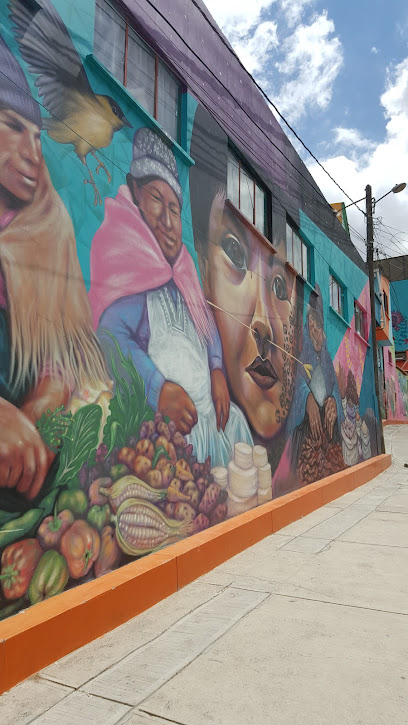
Essential places to dine
Jardín de Asia
Experience a unique fusion of Bolivian and Asian flavors at Jardín de Asia in Santa Cruz - a culinary journey awaits!
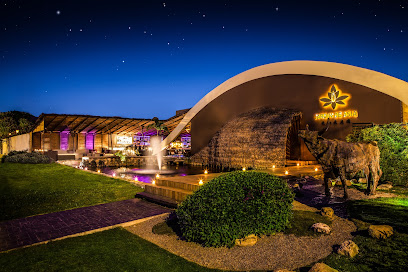
Café del Mundo
Experience the best of Bolivian coffee culture at Café del Mundo in La Paz - where local flavors meet cozy charm.

Gustu
Experience the essence of Bolivian cuisine at Gustu in La Paz - where tradition meets innovation in every dish.
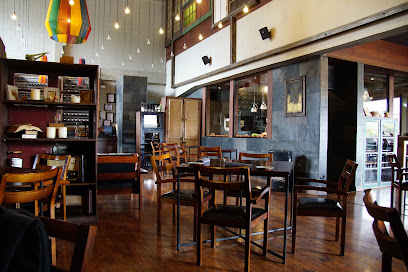
Sach'a Huaska
Experience the rich flavors of Bolivia at Sach'a Huaska, a top-tier restaurant in Santa Cruz de la Sierra offering exquisite dishes in a vibrant atmosphere.
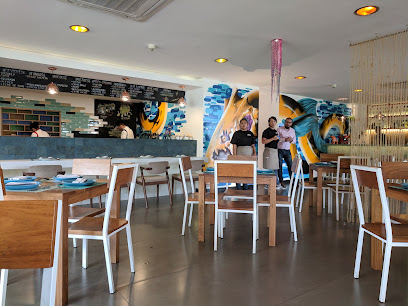
Restaurant Vienna
Experience exquisite European cuisine at Restaurant Vienna in La Paz – where culinary artistry meets Bolivian charm.
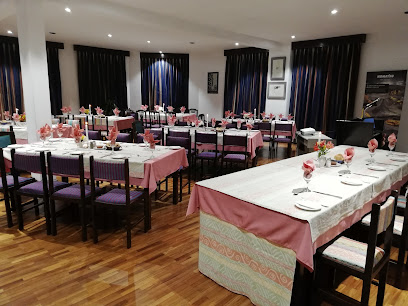
Sabor Cubano
Experience authentic Cuban cuisine in La Paz at Sabor Cubano – where every dish tells a story.
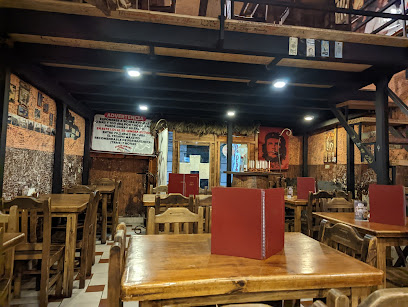
The Carrot Tree Centro
Experience an unforgettable dining adventure at The Carrot Tree Centro in La Paz, where local flavors meet international cuisine.
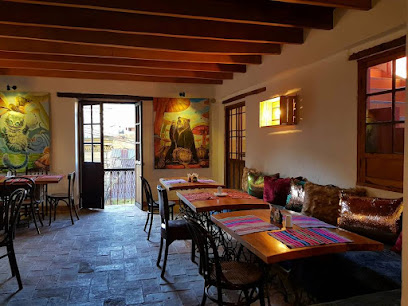
Ali Pacha
Experience the vibrant flavors of Bolivia at Ali Pacha, La Paz's premier vegetarian restaurant known for its innovative dishes and warm ambiance.
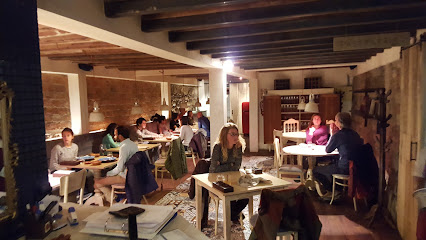
Café Restaurante Banais
Experience authentic Bolivian flavors at Café Restaurante Banais in La Paz - where every meal tells a story.
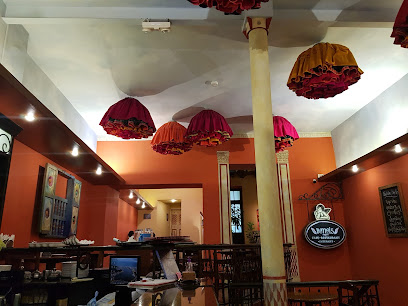
Bolivian Green Kitchen
Experience authentic Bolivian cuisine at Bolivian Green Kitchen – a culinary journey through South America's rich flavors.
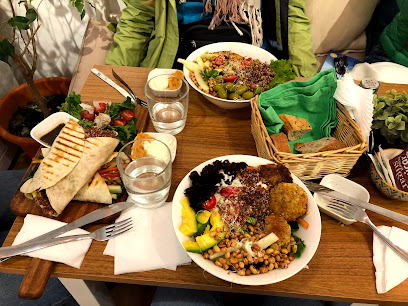
YATI Restaurant café bar
Discover authentic Bolivian cuisine at YATI Restaurant café bar in La Paz - where tradition meets modern culinary artistry.
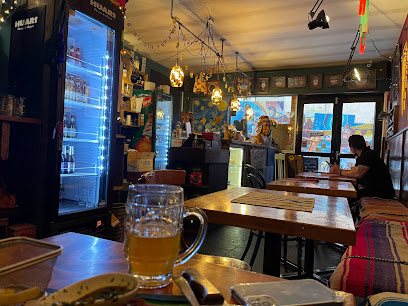
The Local Dish
Experience authentic Bolivian cuisine at The Local Dish in La Paz – where every bite tells a story.
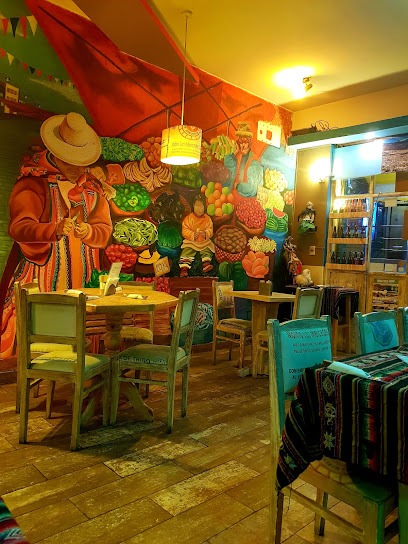
Restaurant La fortaleza del sabor
Experience authentic Bolivian cuisine at Restaurant La Fortaleza del Sabor in Copacabana – where every meal tells a story.

Chez Moustache
Discover the flavors of France at Chez Moustache in La Paz - where authentic cuisine meets warm hospitality.
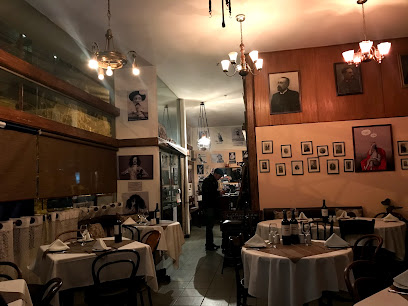
Altura Resto Bar
Discover the vibrant flavors of Bolivia at Altura Resto Bar, where tradition meets contemporary culinary artistry in La Paz.
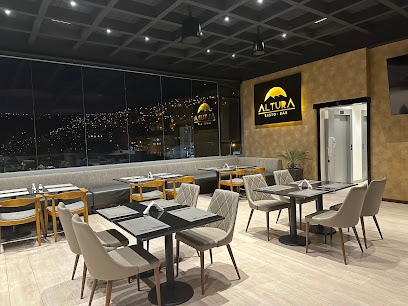
Markets, malls and hidden boutiques
Tika
Discover Tika in La Paz - a unique gift shop offering exquisite handmade crafts and a taste of Bolivian culture.

Colección y entretenimiento
Discover unique Bolivian souvenirs at Colección y Entretenimiento, a charming gift shop in La Paz, showcasing local crafts and artistry.
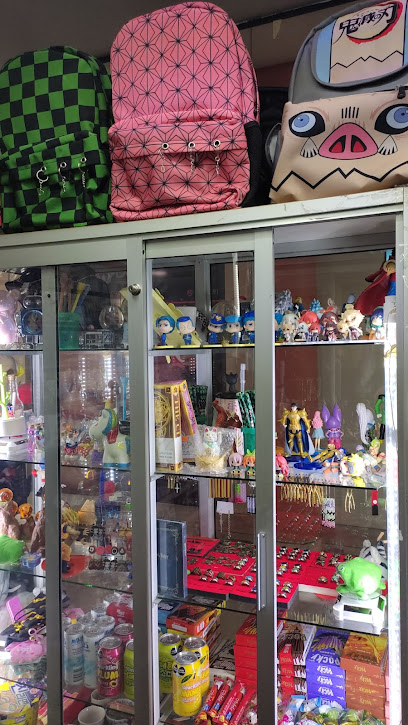
Quisco4
Discover unique Bolivian gifts at Quisco4 in La Paz, where local artistry meets cultural heritage in every handcrafted item.

Mely's
Explore Mely's in La Paz for unique gifts, artisanal cosmetics, and stylish accessories that capture the heart of Bolivia.
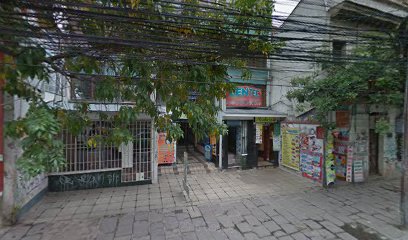
Miercoles
Explore Miercoles, La Paz's charming gift shop offering unique local handicrafts and souvenirs that encapsulate Bolivia's vibrant culture and artistry.

X Zone
Explore the vibrant X Zone Gift Shop in La Paz for unique Bolivian crafts and souvenirs that capture the essence of your travels.
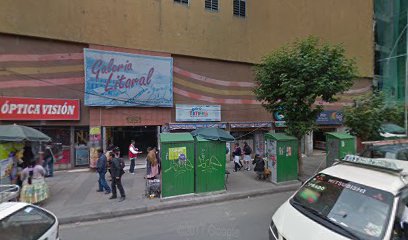
Vanis Store
Explore Vanis Store in La Paz for unique Bolivian gifts and authentic souvenirs that embody the spirit of local craftsmanship.

PAMPAHASI
Discover the heart of Bolivian craftsmanship at Pampahasi, a unique gift shop in La Paz offering authentic local treasures.
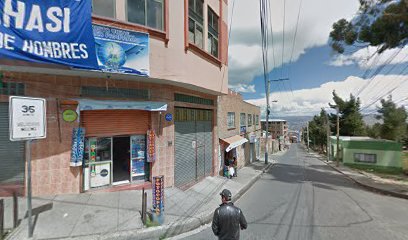
Elian importaciones
Elian Importaciones: A treasure trove of local crafts and unique souvenirs in La Paz, Bolivia, capturing the spirit of Bolivian culture.

DoLeMi
Explore DoLeMi in La Paz for a unique selection of authentic Bolivian gifts and handcrafted souvenirs that showcase local artistry and culture.
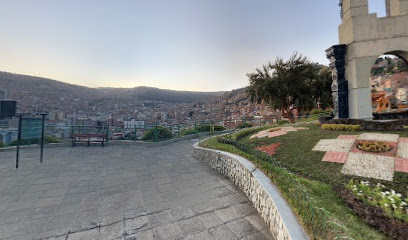
Tykys Obsequios Y Detalles
Explore Tykys Obsequios Y Detalles in La Paz for unique Bolivian gifts that reflect the rich culture and artistry of Bolivia.
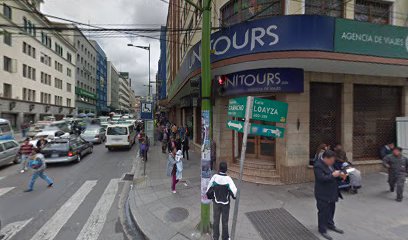
SubliGift
Explore the vibrant culture of Bolivia at SubliGift, your go-to destination for authentic handcrafted souvenirs in La Paz.
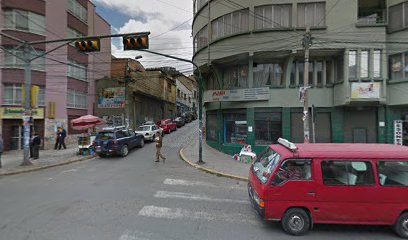
De Todo Un Poco
Discover unique treasures at De Todo Un Poco, a charming gift shop showcasing local artisans and eclectic finds in a warm atmosphere.

COLIBRÍ BOLIVIA
Explore the vibrant culture of Bolivia through unique handcrafted gifts and souvenirs at Colibrí Bolivia in La Paz.
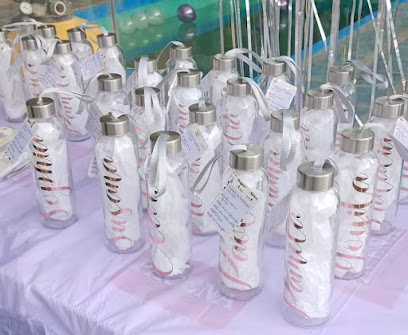
SY-KAME SHOP BOLIVIA
Explore the vibrant culture of Bolivia with unique gifts and handcrafted treasures at SY-KAME Shop Bolivia in La Paz.

Essential bars & hidden hideouts
Pub & Disco Malegria
Discover the lively nightlife of La Paz at Pub & Disco Malegria – a perfect fusion of bar and disco for an unforgettable experience.
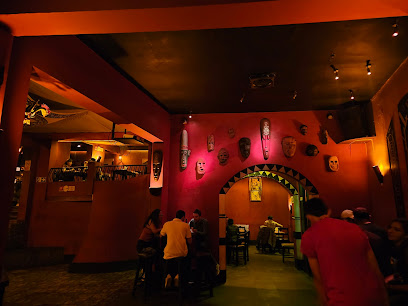
Diesel Nacional
Experience the vibrant nightlife of La Paz at Diesel Nacional, where great drinks, live music, and delicious food come together for an unforgettable evening.
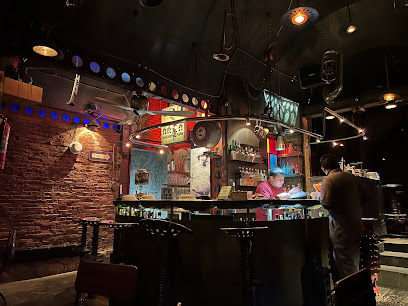
The English Pub
Experience the warmth of British hospitality at The English Pub in La Paz, where great food and drinks meet vibrant culture.
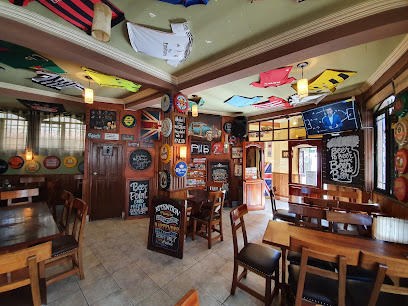
ROCKERS ALIVE MUSIC BAR
Discover the heartbeat of La Paz nightlife at Rockers Alive Music Bar, where live music and vibrant energy create unforgettable nights.
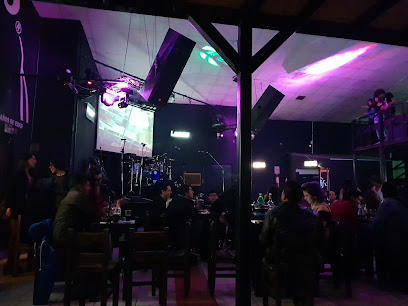
The English Lion's Den
Experience the lively atmosphere of The English Lion's Den in La Paz, where British pub culture meets Bolivian charm and sports excitement.
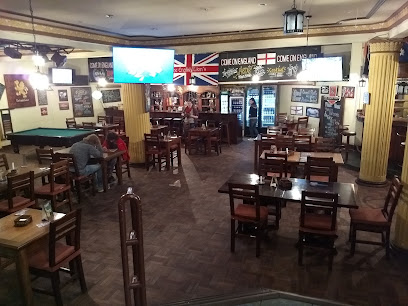
The Lucky Llama Irish Bar
Discover the vibrant atmosphere of The Lucky Llama Irish Bar, where Irish hospitality meets Bolivian flair in La Paz's lively heart.
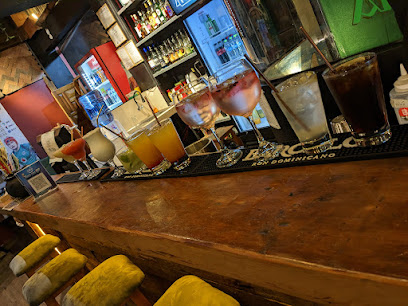
Calderas pub-club
Discover Calderas Pub-Club in La Paz: A lively rock music venue with unique drinks and a vibrant atmosphere for an unforgettable night out.
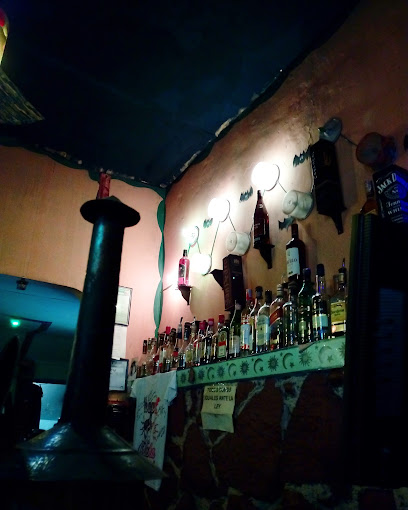
La Costilla de Adan
Experience the vibrant nightlife of La Paz at La Costilla de Adan, where delicious drinks and lively atmosphere await you.
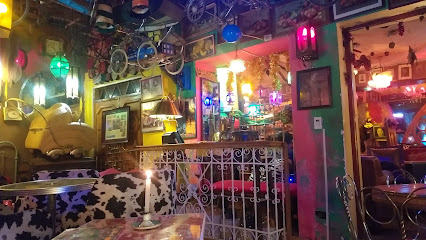
3600 Sport Bar
Experience the thrill of sports and savor delicious food at 3600 Sport Bar in La Paz, the ultimate destination for sports fans.
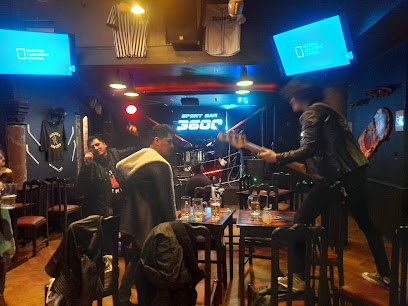
Rock City Bar
Experience the vibrant nightlife of La Paz at Rock City Bar, a lively pub offering delicious drinks, music, and unforgettable memories.
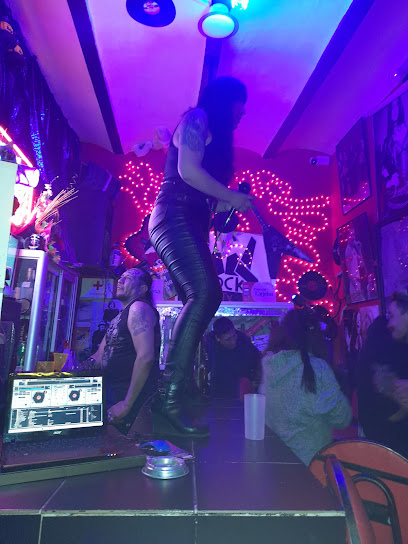
La Birrería Pub
Experience the vibrant flavors of Bolivia at La Birrería Pub, a top gastropub in La Paz offering delicious food and an array of local brews.
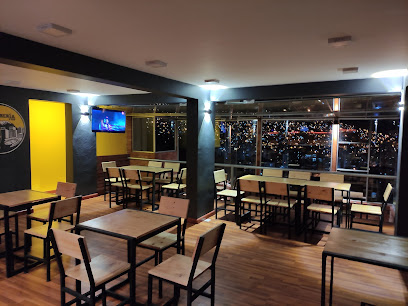
Sátiros
Experience the vibrant LGBTQ+ nightlife at Sátiros, a welcoming gay bar in La Paz, where community and fun come together seamlessly.
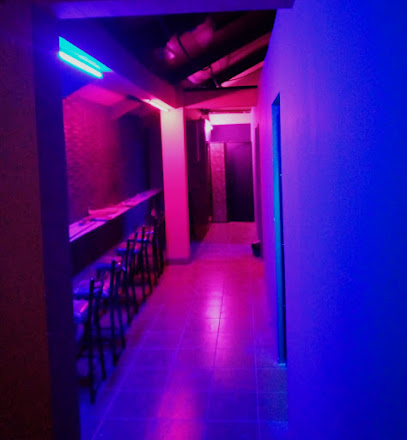
INVASOR
Discover the vibrant nightlife of El Alto at INVASOR, a lively bar showcasing local culture through drinks and music.
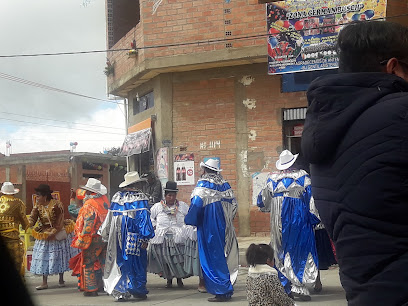
ELEMENTAL TIKI & LOUNGE
Experience tropical bliss at Elemental Tiki & Lounge, a vibrant bar in La Paz serving exotic cocktails and delicious bites in a lively atmosphere.
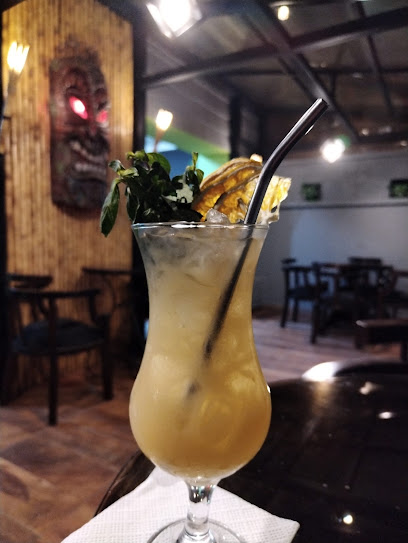
Valhalla Bolivia
Discover the vibrant culinary scene of La Paz at Valhalla, a gastropub offering a unique fusion of traditional Bolivian flavors and modern gastronomy.
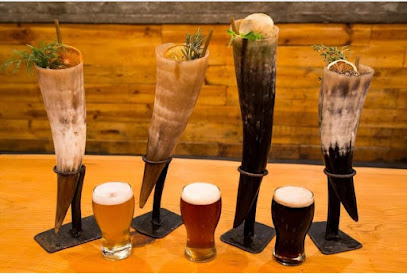
Local Phrases about Chacaltaya
-
- Hello¡Jupaj!
[hoo-paakh] - Goodbye¡Chao!
[chow] - Yes¡Arí!
[ah-ree] - No¡Mana!
[mah-nah] - Please/You're welcome¡Pojta!
[poy-tah] - Thank you¡Asinti!
[ah-seen-tee] - Excuse me/Sorry¡Asinti!
[ah-seen-tee] - How are you?¿Imaynallampi?
[ee-mine-yahl-lahm-pee] - Fine. And you?Allin. Ima yuyarqa?
[ahl-leen. ee-mah yoo-yahr-kah] - Do you speak English?¿Inglis simiyan?
[een-glees see-me-yahn] - I don't understandMana atinikuychu
[mah-nah ah-tee-nee-kwai-choo]
- Hello¡Jupaj!
-
- I'd like to see the menu, pleaseMenuykita mikunichik
[meh-noo-ykee-tah mee-koo-nee-cheek] - I don't eat meatNanakuyta karnikuy
[nah-nah-koo-ytah kahr-nee-kwai] - Cheers!¡Salud!
[sah-lood] - I would like to pay, pleaseYuyaykipuni kani
[yoo-yai-kee-poo-nee kah-nee]
- I'd like to see the menu, pleaseMenuykita mikunichik
-
- Help!¡Jatun!
[hah-toon] - Go away!¡Imaita!
[ee-mai-tah] - Call the Police!¡Pulis simita!
[poo-lees see-mee-tah] - Call a doctor!¡Médiku simita!
[meh-dee-koo see-mee-tah] - I'm lostAnkaykuqmi
[ahn-kai-kook-mee] - I'm illManakuy
[mah-nah-kwai]
- Help!¡Jatun!
-
- I'd like to buy...Ñanayta mikuyta...
[nyah-nai-tah mee-koo-ytah] - I'm just lookingTukuyta rikunki
[too-koo-ytah ree-koon-kee] - How much is it?Ima kanchu?
[ee-mah kahn-choo] - That's too expensiveChaypi kallpachaku
[chai-pee kahl-pah-chah-koo] - Can you lower the price?K’atik kanchu?
[kaa-teek kahn-choo]
- I'd like to buy...Ñanayta mikuyta...
-
- What time is it?¿Imaynallata rikunki?
[ee-mine-yahl-lah-tah ree-koon-kee] - It's one o'clockTaytan rikunki
[tie-tahn ree-koon-kee] - Half past (10)Iskayni
[eess-kai-nee] - MorningP’unchaw
[poon-chao] - AfternoonCh’usku
[choos-koo] - EveningTuta
[too-tah] - YesterdayIllapa
[eel-lah-pah] - TodayKunan
[koo-nahn] - TomorrowK’uychi
[koo-ee-chee] - 1Huk
[hook] - 2Iskay
[eess-kai] - 3Kimsa
[keem-sah] - 4Tawa
[tah-wah] - 5Pichqa
[peech-kah] - 6Soqta
[sohk-tah] - 7Qanchis
[kahn-chees] - 8Pusaq
[poo-sahk] - 9Isqun
[eess-koon] - 10Chunqqa
[choon-kkah]
- What time is it?¿Imaynallata rikunki?
-
- Where's a/the...?¿Maypi...?
[meh-ee-pee] - What's the address?¿Maypi wasiwan?
[meh-ee-pee wah-see-wahn] - Can you show me (on the map)?¿Ñuqapuni? (mapawan)
[nyoo-kah-poo-nee? (mah-pah-wahn)] - When's the next (bus)?¿Imaynata tukuy?
[ee-mine-yah-tah too-koo-y] - A ticket (to ....)Qhapaqkuna (....manta)
[kah-pahk-koo-nah (....mahn-tah)]
- Where's a/the...?¿Maypi...?
History of Chacaltaya
-
Chacaltaya, a mountain in the Cordillera Real of the Andes in Bolivia, was first climbed in the early 20th century by local explorers. The higher altitudes and unique terrain made it a significant location for scientific research and mountaineering.
-
In the 1930s, the Chacaltaya area saw the establishment of one of the world's highest ski resorts. The Bolivian Club Andino built the resort, which included a rope tow powered by a car engine installed in the late 1940s. This development transformed Chacaltaya into a popular destination for both local and international skiing enthusiasts.
-
In the mid-20th century, Chacaltaya became a hub for astrophysical and atmospheric research. The Chacaltaya Cosmic Ray Laboratory, established in 1942, played a pivotal role in studying cosmic rays. It became internationally renowned after the detection of the 'pion,' a subatomic particle, in 1947, contributing significantly to the field of particle physics.
-
Over the past few decades, Chacaltaya has been dramatically affected by climate change. The once-thriving glacier, which supported the ski resort, has almost entirely melted. By 2009, the glacier had retreated to such an extent that skiing was no longer possible, marking the end of an era for the ski resort.
-
Chacaltaya holds cultural importance for the indigenous Aymara people, who consider the mountain sacred. Traditional ceremonies and rituals are often performed here, seeking blessings and paying homage to Pachamama, the Earth Mother. These cultural practices highlight the deep connection between the local communities and their natural environment.
-
Today, Chacaltaya is a destination for trekkers, scientists, and tourists keen to witness the remnants of the glacier and explore the high-altitude terrain. The Chacaltaya Laboratory continues to be a site for research, and the area offers stunning panoramic views of the surrounding Andes, including the nearby Huayna Potosí mountain.
Chacaltaya Essentials
-
Chacaltaya is located in the Andes Mountains, approximately 30 kilometers from the city of La Paz, Bolivia. The nearest international airport is El Alto International Airport in La Paz. From La Paz, you can take a taxi or join a guided tour that includes transportation to Chacaltaya. The journey typically takes around 1.5 to 2 hours by road, depending on weather and road conditions.
-
While public transportation options to Chacaltaya are limited, the most common way to reach the mountain is by booking a tour with one of the many travel agencies in La Paz. These tours usually include a round-trip transfer and a guide. If you prefer a more personalized experience, hiring a private taxi or renting a car are also viable options. Be aware that the road to Chacaltaya is steep and narrow, requiring careful driving.
-
The official currency in Bolivia is the Boliviano (BOB). It is advisable to carry cash when visiting Chacaltaya, as there are no ATMs or card payment facilities available on the mountain. In La Paz, credit cards are accepted in many hotels, restaurants, and shops, but always check in advance. It is a good idea to exchange money or withdraw cash in La Paz before heading to Chacaltaya.
-
Chacaltaya is generally safe for tourists, but it's important to take standard precautions. Avoid traveling alone, especially in remote areas, and keep your belongings secure. La Paz has some areas with higher crime rates, such as El Alto and certain parts of downtown, so stay vigilant and avoid walking alone at night. Always inform someone of your travel plans and expected return time.
-
In case of an emergency while at Chacaltaya, the nearest medical facilities are in La Paz. It is crucial to have travel insurance that covers medical emergencies and evacuation. For immediate assistance, dial 110 for police, 118 for fire, and 165 for medical emergencies. If you experience altitude sickness, descend to a lower altitude as quickly as possible and seek medical help.
-
Fashion: Do wear warm, layered clothing as temperatures can drop significantly at high altitudes. Sturdy hiking boots and sunglasses are also recommended. Avoid wearing sandals or light clothing. Religion: Respect local customs, especially if you are visiting nearby indigenous communities. Public Transport: Do use registered taxis or tour services. Avoid unregistered or unofficial transportation options. Greetings: A polite handshake is common. Don't be overly familiar unless invited. Eating & Drinking: Do try traditional Bolivian foods like salteñas and api. Don't drink tap water; always opt for bottled water to avoid stomach issues.
-
To experience Chacaltaya like a local, consider visiting during the off-peak season when the mountain is less crowded. Engage with local guides who can share fascinating stories about the area's history and culture. Don't miss the chance to visit the remains of the Chacaltaya ski resort, once the highest in the world. For a more immersive experience, combine your visit with a trip to the nearby Huayna Potosi mountain.
Nearby Cities to Chacaltaya
-
Things To Do in Copacabana
-
Things To Do in Puno
-
Things To Do in Cochabamba
-
Things To Do in Tacna
-
Things To Do in Arica
-
Things To Do in Arequipa
-
Things To Do in Sucre
-
Things To Do in Potosi
-
Things To Do in Uyuni
-
Things To Do in Iquique
-
Things To Do in Cusco
-
Things To Do in Santa Cruz de la Sierra
-
Things To Do in Machu Picchu
-
Things To Do in Tarija
-
Things To Do in San Pedro de Atacama

